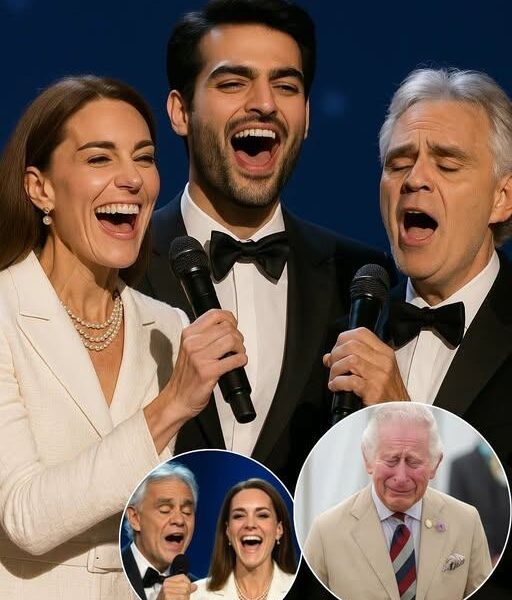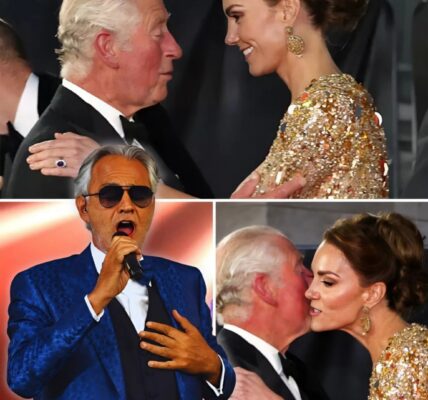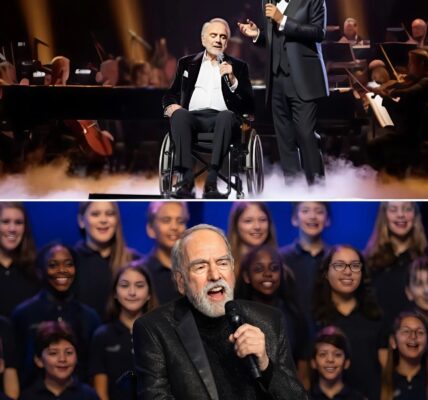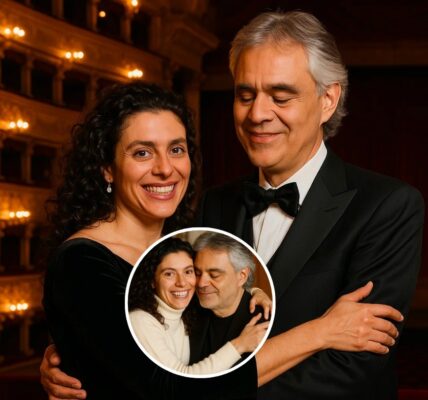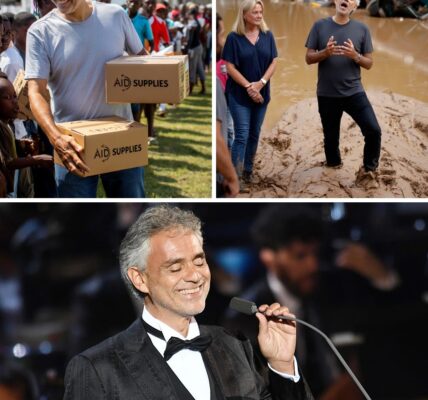Princess Kate, Andrea Bocelli, and Matteo Bocelli Perform ‘Caruso’: A Royal Evening Beyond Words. It was supposed to be a traditional evening—a majestic display of British pride, tradition, and ceremonial grandeur. However, what transpired within Windsor Castle’s magnificent St George’s Chapel halls changed everyone’s heart. In addition to royals and robes, the Order of the Garter, Britain’s oldest and most esteemed order of chivalry, hosted a mystical fusion of music, tradition, and unanticipated vulnerability.

It was meant to be a night of tradition—a stately pageant of British legacy, honor, and ceremonial splendor. But what unfolded inside the majestic halls of St George’s Chapel at Windsor Castle left every heart transformed. The Order of the Garter, Britain’s oldest and most prestigious order of chivalry, played host not just to royals and robes—but to a magical union of music, legacy, and unexpected vulnerability.

The air was thick with anticipation as guests gathered beneath the soaring arches of the 14th-century chapel. Flickering candlelight danced across ancient stone, casting golden shadows on velvet-cloaked knights and dignitaries. Among them stood the Princess of Wales—Catherine, elegant and glowing—returning to public life after months of private battle. Her warm laughter with the Duchess of Edinburgh on the castle grounds earlier hinted at something special ahead, but no one could have predicted what was to come.

Just as the ceremonial procession concluded and guests began to settle into the solemn quiet of the evening, the mood shifted. The chandeliers dimmed. A string quartet, previously hidden among the arches, began to play the haunting opening of “Caruso.” A collective hush fell over the crowd. Then, from the back of the chapel, two silhouettes stepped forward.
Andrea Bocelli and his son, Matteo.

Dressed in classic black tuxedos, the father-son duo moved with grace and gravity. Andrea’s presence was timeless—commanding the room with each step—while Matteo walked beside him, calm but electric with youthful charisma. As they took their place at the altar, Andrea began to sing.
His voice—seasoned, soul-stirring—rose like a prayer through the cathedral’s sacred silence. He didn’t just sing the notes. He told the story. The audience sat spellbound.
Then, as if guided by the very spirit of the music, Princess Kate emerged.
Clad in a soft cream Self-Portrait dress and a wide-brimmed Sean Barrett hat, she seemed almost angelic beneath the stained-glass glow. Her five-strand pearl necklace shimmered softly—the same vintage Susan Caplan design she wore at the VE Day 80th Anniversary concert. Every detail spoke of quiet strength, of grace reclaimed.


She stepped between the Bocellis, and with only the briefest exchange of nods, began to sing.
“Te voglio bene assai…”
Her voice, tender and true, wove seamlessly with Matteo’s—his rich, mellow tenor lifting hers with reverent support. Andrea followed, anchoring them both in a depth of emotion that stirred every soul present. The trio moved like one—no spotlight, no competition—just shared reverence for the music and its meaning.
It wasn’t a performance. It was a prayer.
From the rafters to the floor, the chapel filled with feeling: longing, hope, remembrance. The meaning of “Caruso”—a song of eternal love, aching memory, and devotion—gained new resonance in their shared voices. Kate’s final note quivered slightly, not from lack of control, but from the sheer weight of feeling.
And in the front row, King Charles III bowed his head.
His posture, once upright with ceremonial duty, softened. One hand clutched his Garter sash, the other pressed gently to his cheek. Then, unmistakably—a tear. It traced a quiet path down his face as the harmonies swelled around him.
The moment wasn’t just emotional. It was monumental.
For a monarch so often seen as stoic, it was a window into the heart of the crown—a father, a grandfather, a son of music, undone by the beauty before him. Queen Camilla reached for his hand. He did not resist.
As the final chord lingered and faded, silence reclaimed the room.
And then—applause.
Roaring, rising, relentless.
The Bocellis bowed. Kate, visibly moved, placed a hand to her heart. The standing ovation didn’t fade. If anything, it surged again, like a wave refusing to break.
Later that evening, as guests spilled into the cool Windsor air, whispers filled the gardens. Social media exploded. Within 48 hours, over 3.8 million views amassed on YouTube. Comment sections became confessionals of weeping strangers:
“I didn’t understand a word, but I felt every second.” “Katherine’s voice wasn’t perfect. That’s what made it perfect.”
Catherine, 43, who missed the previous year’s Garter ceremony due to her preventative chemotherapy, had made her return not with words—but with song. And not just any song. A ballad of love and sorrow, shared beside two icons of global music.
She did not try to outshine. She simply showed up—authentic, open, present.
By the end of the night, it wasn’t royalty or celebrity that people remembered. It was humanity. Three voices, different in age and origin, bound by a single sacred melody.
And in that sacred space, something eternal was born.
Not a show. Not a spectacle.
A memory. A moment. A harmony that will echo for generations.
